The State of the Industry Report is largely an examination of history, what has happened and what events occurred over the past decade that shape the industry today.
Such a study offers more fascination due to the nature of the jewellery industry, which is often driven by trends and fads.
In addition to the qualitative analysis, Jeweller considered it appropriate to gain industry participants' insight into their beliefs and attitudes to specific issues.
Retailers and suppliers were provided with a set of 10 questions covering a wide range of topics.
A question in the back of our minds pertained to business in a post-pandemic world: Is your business now more profitable than before the COVID-19 pandemic? The results were quite surprising.
Another question confirmed a trend that we believed had been in place for some time: a shift back to the original purpose of owning a jewellery store.
Is custom-made and bespoke jewellery enjoying a revival? This was a common talking point among participants at this year's International Jewellery Fair - and now this survey appears to confirm these suspicions.
Many other questions related to matters are covered in depth in this report, including sustainability, provenance, and the importance of digital marketing.
The survey sought to address broader industry sentiment about the state of the jewellery industry, testing ‘the pulse’ of respondents about the future of the trade. Some responses were expected, but many were most surprising, if not unnerving!
Lab-created diamonds have been one of the most passionately debated topics for many years, and yet, 50 per cent of retailers who responded to the survey said they are not important to their business.
The answers have also painted a vivid picture of the changing nature of the industry - more than 39 per cent of respondents advised that they plan to sell their business or retire within the next five years.
This would suggest that the evolution or 'changing of the guard' within the industry is far from complete.
This research is, of course, quantitative, not qualitative. This survey measures the number of people who have a view or belief about a topic – but does not explain why they feel that way.
Generally speaking, a quantitative survey provides the numbers (percentage of people) to assess or disprove a study's broad points.
Qualitative data, on the other hand, provides the details and the depth to understand the full implications better.
In other words, a quantitative survey can provide a snapshot of more significant issues that qualitative research can further investigate.
Another difference is that it's not as easy to control the number of responses or respondents in a quantitative survey, which could result in over or under-representation.
To that end, the retailer survey has an over-representation of JAA members at 29 per cent.
As a percentage of Australian jewellery retail stores, the JAA retail membership is only about 10 per cent or even as low as seven per cent.
However, and somewhat ironically, this over-representation delivers the JAA a damning message from retailers and a worse message from the survey of the supplier/wholesaler channel.
While the exact membership of suppliers/wholesalers to the JAA is a mystery, it is believed to be an insignificant figure compared to the number of industry suppliers - large and small.
That said, JAA supplier members are over-represented in the survey at 25 per cent and, again, the message to the JAA is clear.
About 85 per cent of respondents said the JAA gives little or no support to industry suppliers.
Regardless of both survey results, they offer an intriguing insight into the past decade and an even more exciting glimpse of the future.
The first thing to consider is that while these survey questions are broad, some relate to another topic as a type of ‘check question’. For example, the question about the importance of provenance to consumers is supported by the question about eco-friendly and sustainability, so the two results can be compared. Lab-created diamonds feature heavily in mainstream media as being vital to consumers, but what is the reality on the retail ‘coalface’, where it matters? Question two can also be read against question eight, and it makes for an interesting result. Likewise, the perception of industry organisations is important to review, and it’s noteworthy that the buying groups are clearly held in high regard, while the reputation of the Jewellers Association of Australia is in question. Digital marketing is another interesting point of contention. Consultants and experts all say it’s more important now than ever before; however, this survey suggests that retailers are yet to see a clear connection between sales and online marketing. |
As you can see, more suppliers than retailers say their business is now more profitable than it was before the COVID-19 pandemic. Question two addresses product planning, ordering, and restocking by retailers which clearly remains tumultuous, with just 1.2 per cent of suppliers suggesting that this aspect of the trade is in ‘excellent’ condition. It’s also interesting to compare suppliers’ issues about provenance and proof of origin (question eight) to those of their customers. Lab-created diamonds remain a passionately debated topic within the diamond industry, for suppliers, it’s clearly of little concern. Suppliers also seem to have little regard for the JAA’s support of the wholesaler sector, with around 85 per cent saying it is average to very poor. Suppliers also appear to hold Australia’s buying groups in high regard, with more than 37 per cent of responses suggesting that these groups offer a valuable service to retailers. Interestingly, around 29 per cent of respondents say they’d like to retire or sell their business in the next five years. |
MethodologyTwo sets of 10 questions were created to survey retailers and suppliers. Many questions between the two groups were similar or identical as they were equally relevant and important to each side. The surveys were undertaken using Survey Monkey, a digital research platform and emailed using Jeweller’s comprehensive database. The retailer survey began on 31 October and ended on 17 November with more than 200 independent retailers responding, which is estimated to be around 10 per cent of the market. The supplier survey was opened on 9 November and closed on 17 November. It received 52 responses, which is estimated to be between 8-10 per cent of the market. |
STATE OF THE INDUSTRY REPORT
Published dec 2023 - jan 2024
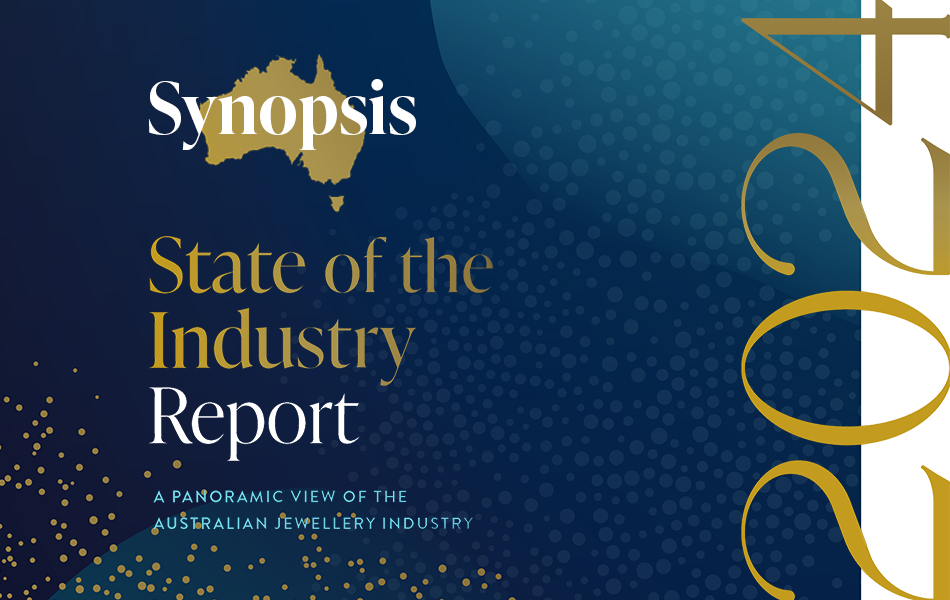 | 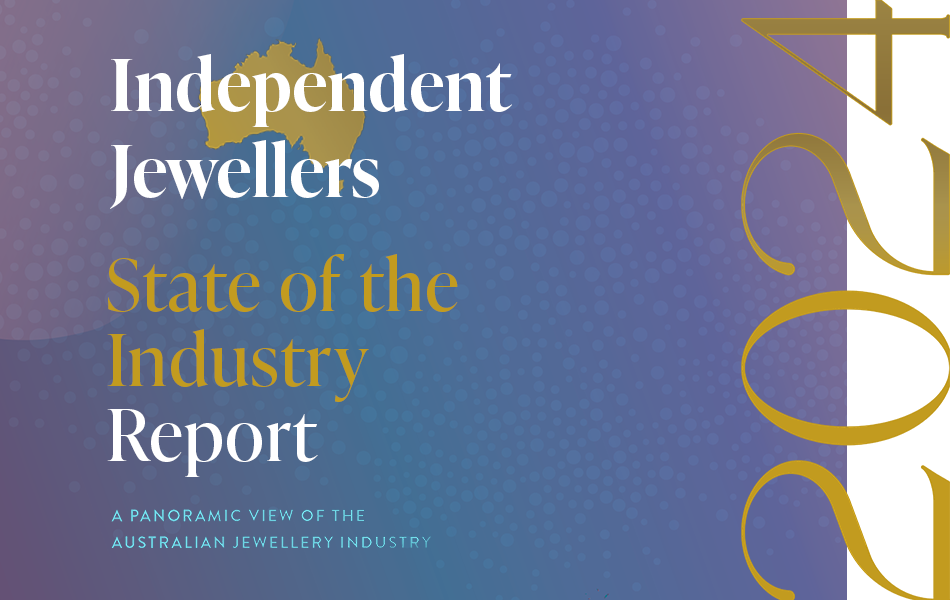 | 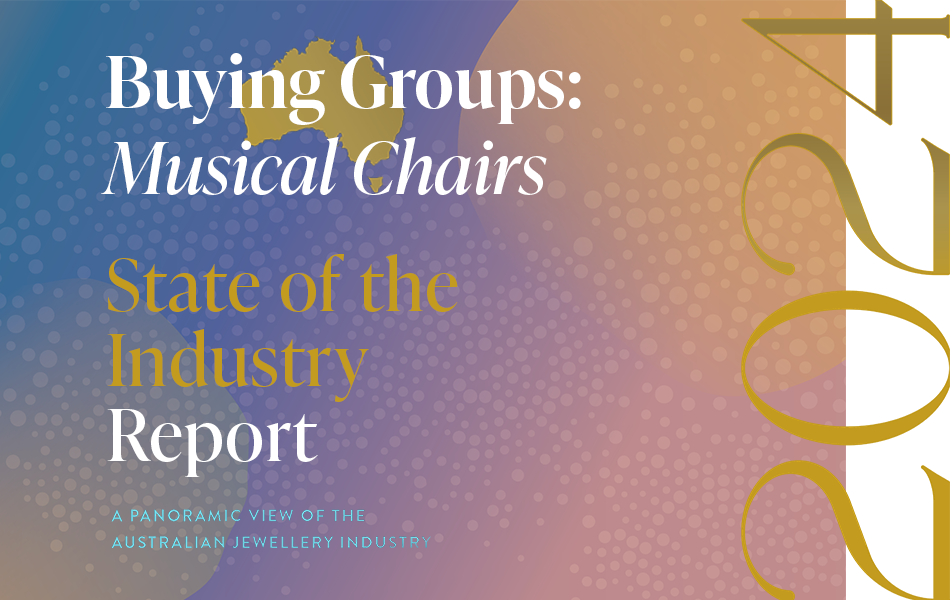 |
A Snapshot of the
Australian jewellery industry
| To better understand the findings of the State of the Industry Report, it's important to be aware of the changes to the industry and how they affect the methodology. |
| Independent Jewellery Stores:
How many are there in Australia?The results are in and you will be surprised.
How has the retail jewellery market fared over the past decade? How does it compare to other areas of the jewellery industry? |
| Jewellery Buying Groups: The ups and downs of this vital sectorThe nature of buying groups has changed significantly in the past decade and there's an important question to be answered.
Can Australia support four buying groups? |
|
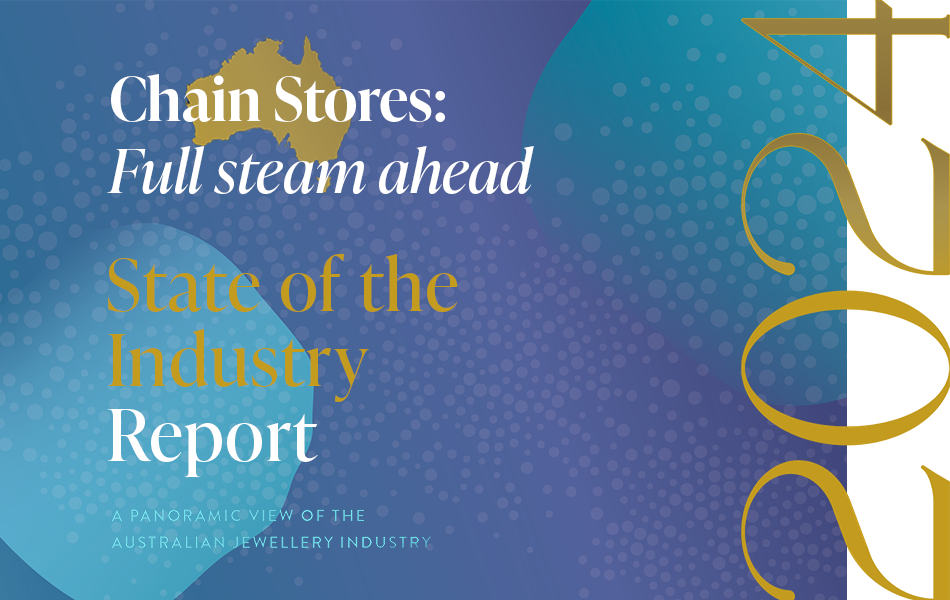 | 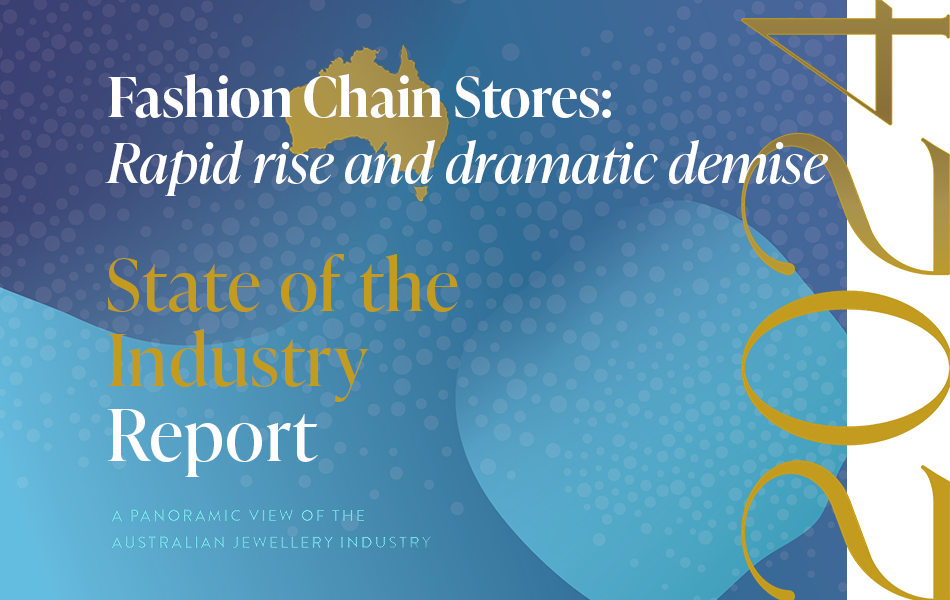 | 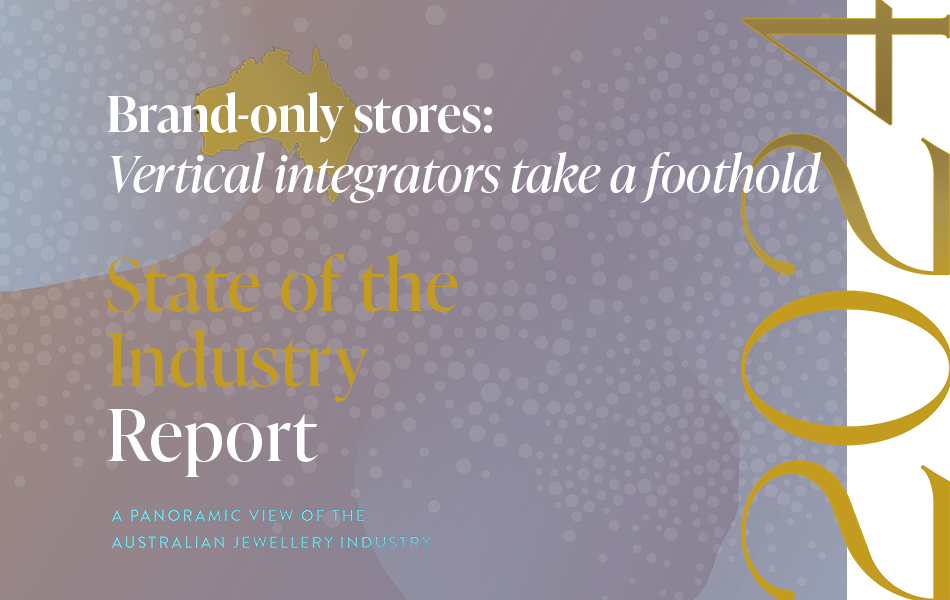 |
Jewellery Chains:
Stronger and stronger... for some!| The fine jewellery chains have performed well over the past decade; however, consolidation could be on the horizon as the 'big fish' look for new customers via retail brand differentiation. |
| Fashion Jewellery Chains:
Examining explosive collapsesThe past 10 years have been a rollercoaster ride for fashion jewellery chains, defined by rapid expansions and dramatic collapses.
That said, the carnage continues in 2024. Is anyone safe? |
| Brand-Only Watch & Jewellery Stores: Is the sky the limit?
| The most significant change over the past decade has been the expansion of the big international watch and jewellery brands as they take control of their public perception via a vertical market model. |
|
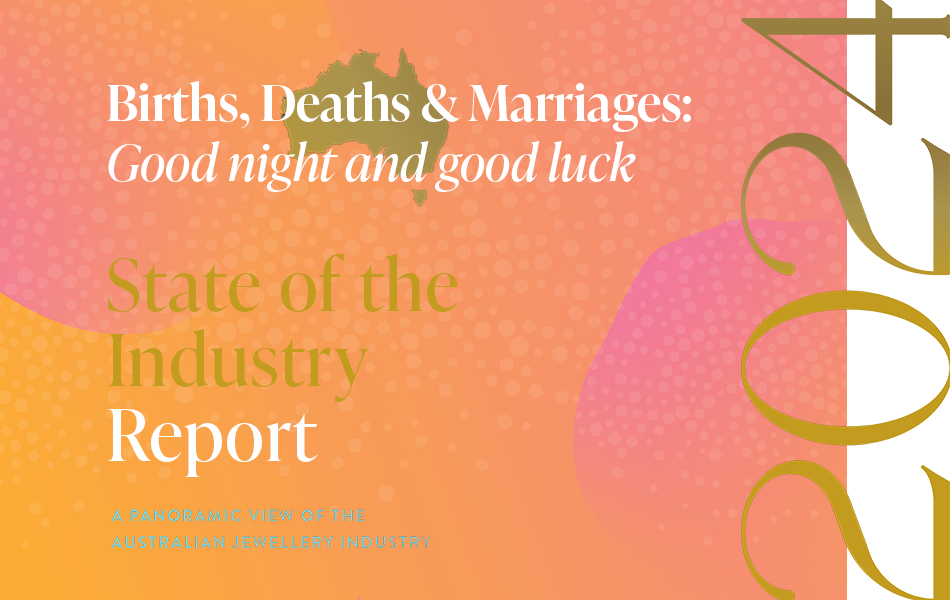 | 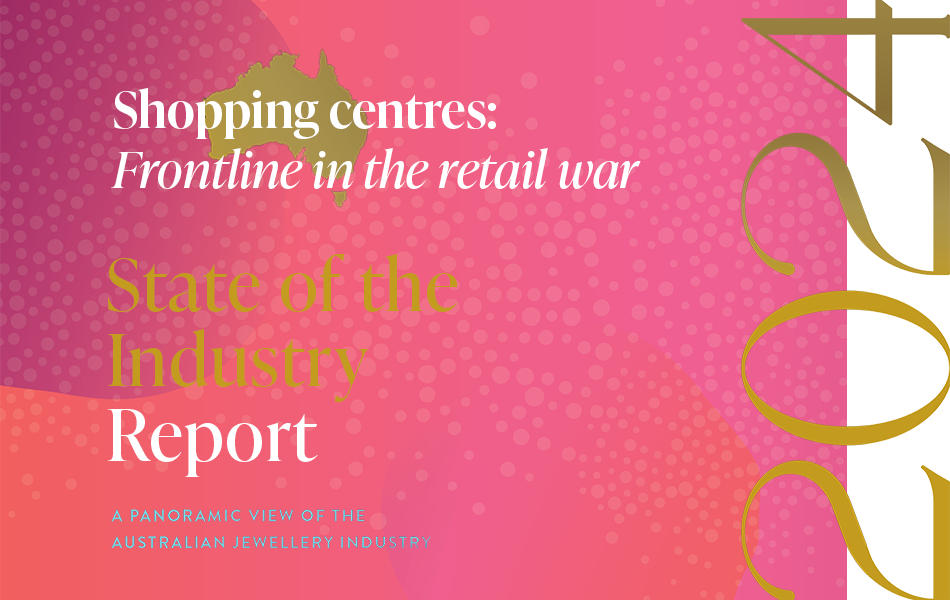 | 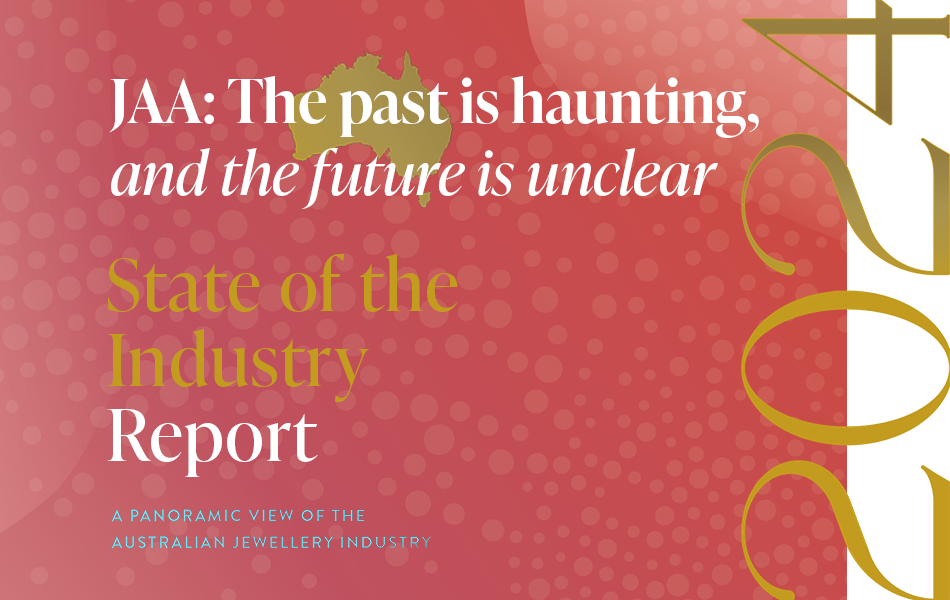 |
Births, Deaths & Marriages:
See you on the other side!
| No market is immune to change and no one escapes death. It’s time to reflect on the 'comings and goings' of the Australian jewellery industry over the past 13 years. |
| Shopping Centre Conflict:
Haven't you heard? We're at war!
| Australia’s shopping centres are a towering figure in the retail sector and fine and fashion jewellery stores have played an integral part in their speciality store 'mix'. |
| Jewellers Association of Australia:
Where does the JAA go from here?
| It's been a brutal decade for the Jewellers Association of Australia and much of the damage has been self-inflicted. Worse, the JAA's missteps don't seem to end. |
|
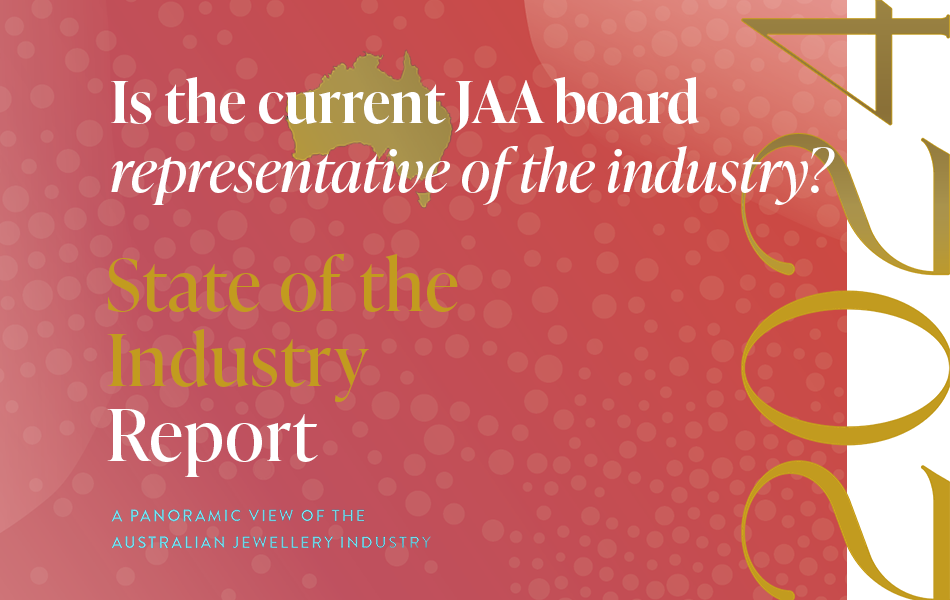 | 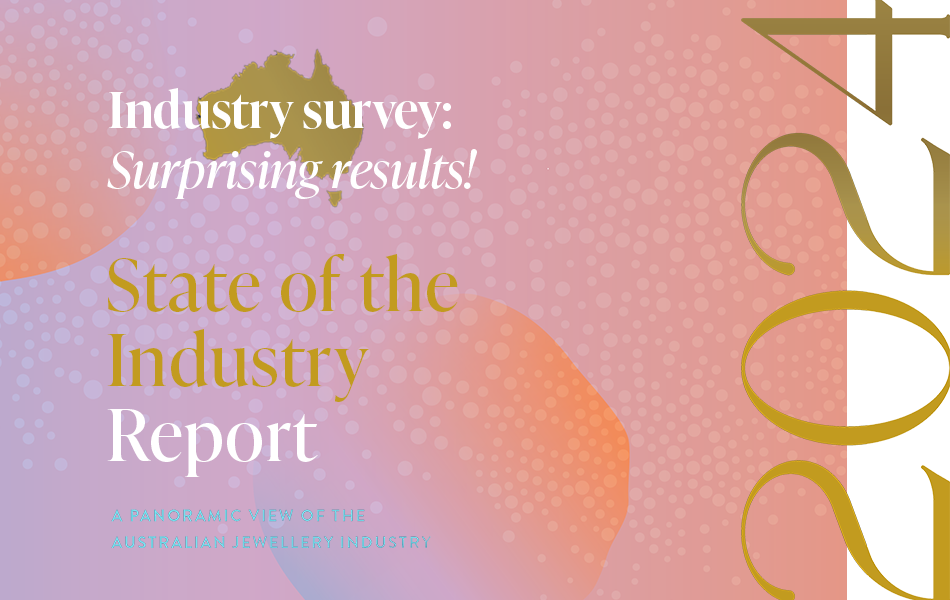 | 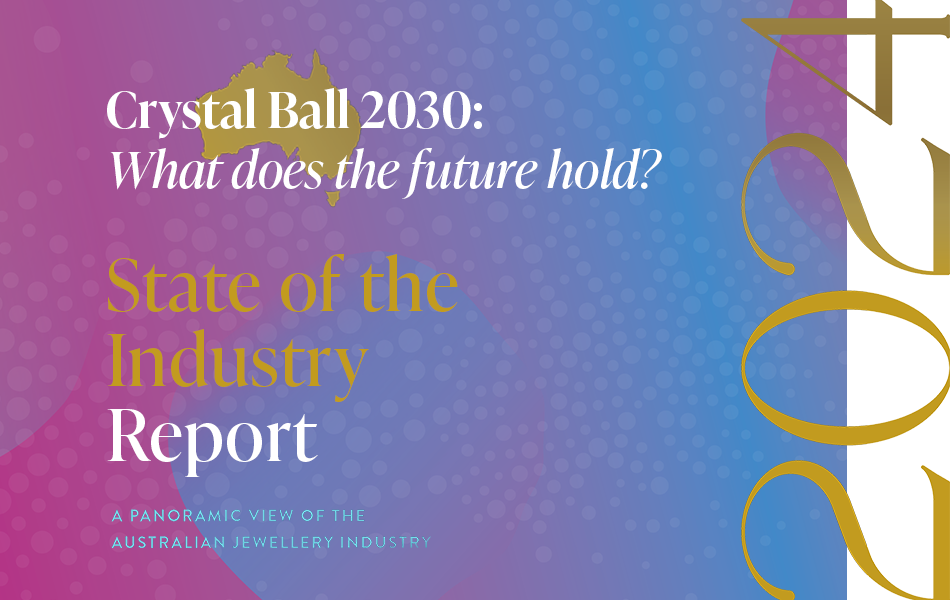 |
Jewellers Association of Australia:
Does it represent the industry? | As membership continues to fall, the JAA is increasingly seen as a club of like-minded people rather than a peak body. |
| Jewellers Have Their Say: Prepared to be surprised and intrigued! | What do jewellers say about the past, present, and the future? A survey of retailers and suppliers revealed fascinating results. |
| Crystal Ball 2030: Bold predictions for the future of retail| Change is inevitable; however, progress is optional. How can your business benefit from upcoming changes in the jewellery industry? |
|
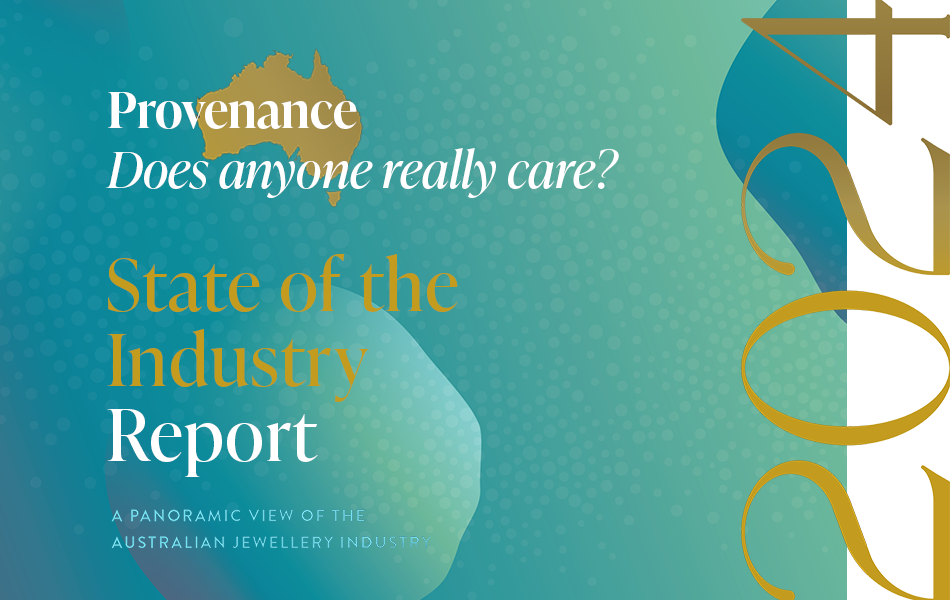 | 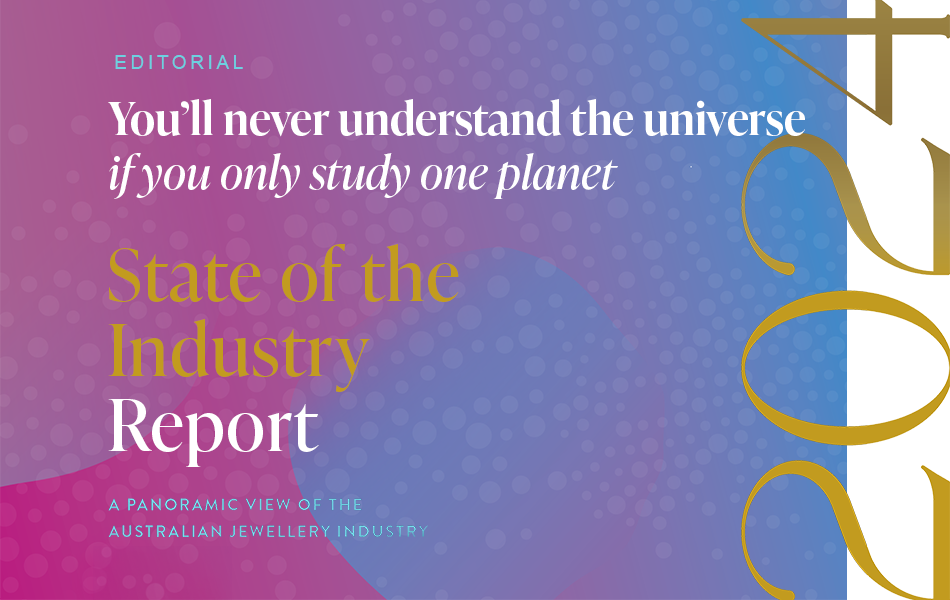 | 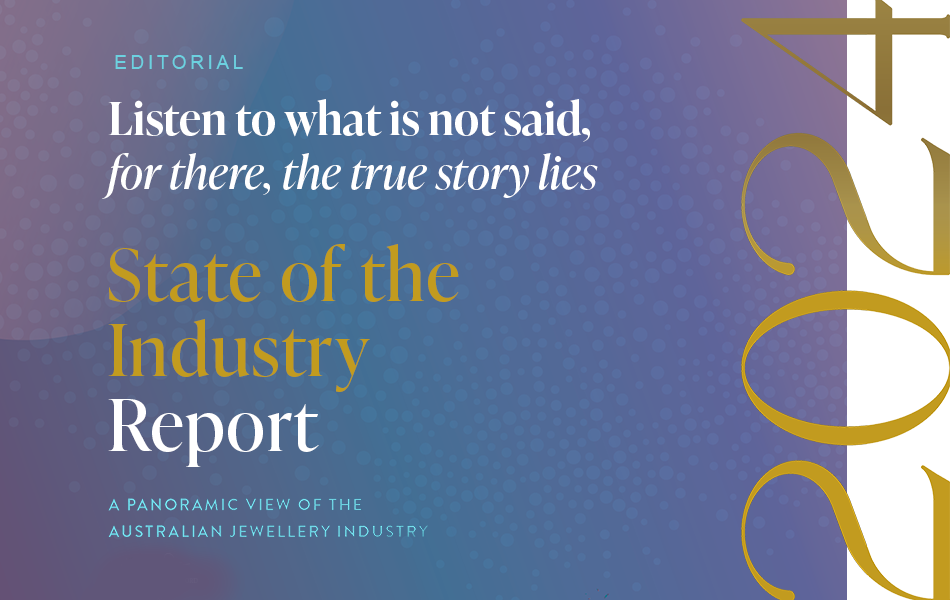 |
Provenance or Proof of Origin: Does anyone seriously care? | Provenance or proof of origin is a hot topic. Conventional wisdom says it's an important issue, but in this digital era it's also important to challenge tradition. |
| You’ll never understand the universe
if you only study one planet | More often than not, the questions are complicated, but the answers are simple. Publisher ANGELA HAN reflects on the creation of the State of the Industry Report. |
| Listen to what is not said,
for there, the true story lies | Editor SAMUEL ORD explains some of the behind-the-scenes work that went into this State of the Industry Report and discusses expectations and reality. |
|
STATE OF THE INDUSTRY REPORT - ADDENDUMS
SINCE JANUARY 2024
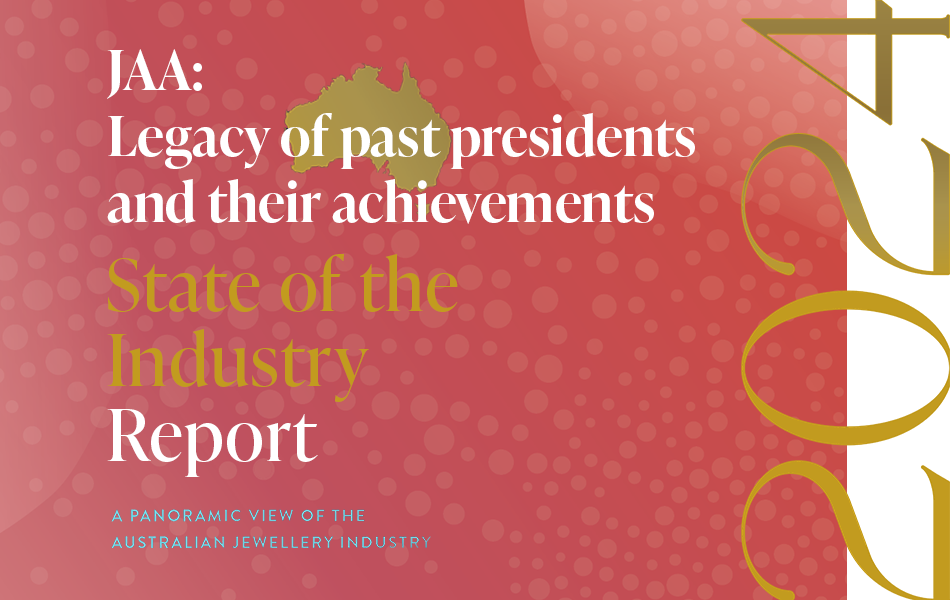 | 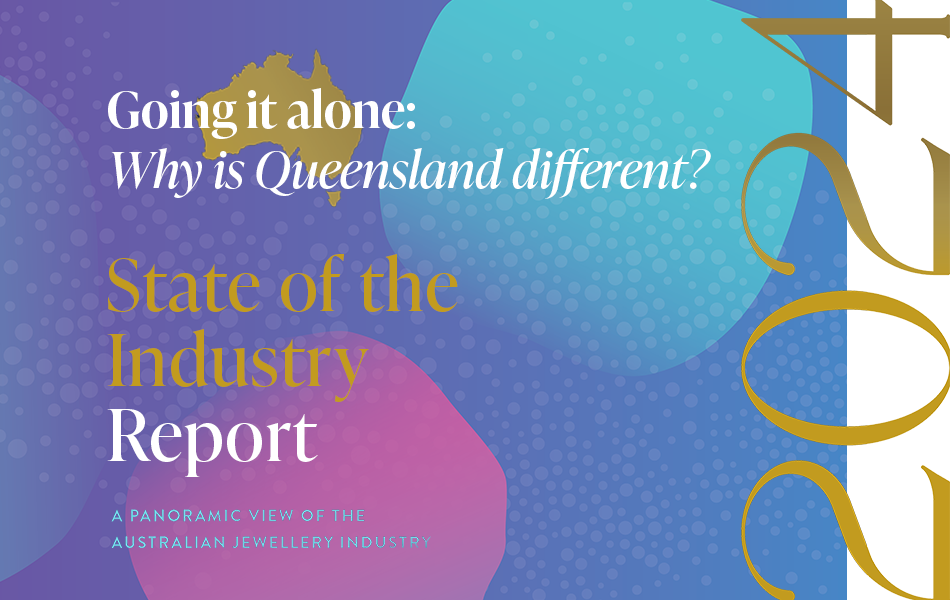 | 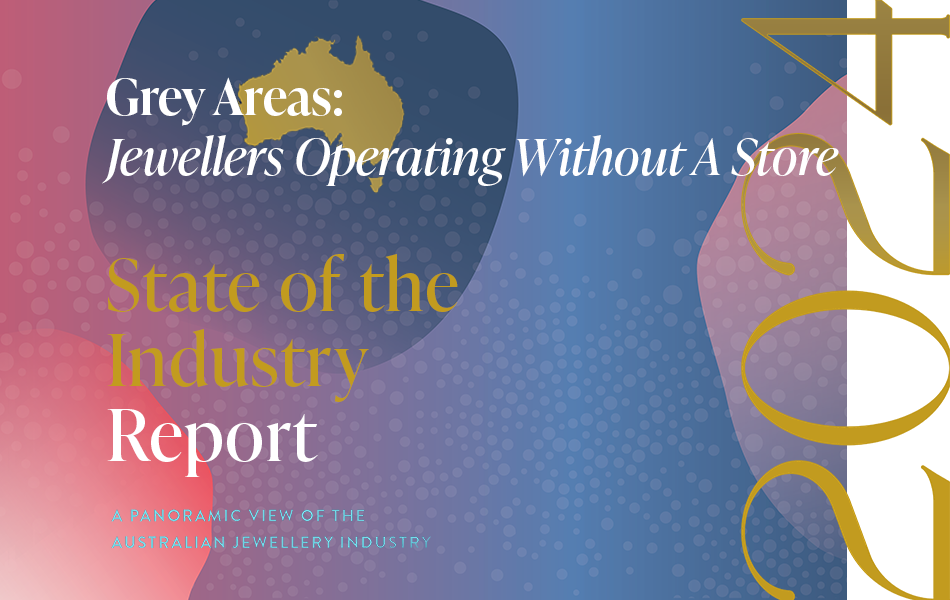 |
Questions of legacy and accomplishment for the JAA| The structure of the JAA is unique, which causes complexity in measuring its success. To look to the future, one must recognise the success and failures of the past. |
| Why is Queensland so different? Well, the answer is: Because it is!| Over the past decade, Queensland's number of jewellery stores decreased dramatically more than any other state. Why? The answers are intriguing. |
| Grey areas: Jewellers operating without a retail storefrontAs trends emerged and consumer shopping habits changed, so too has retailing.
The COVID pandemic probably hastened the move towards specialist jewellers, those that do not require a storefront. |
|
| | 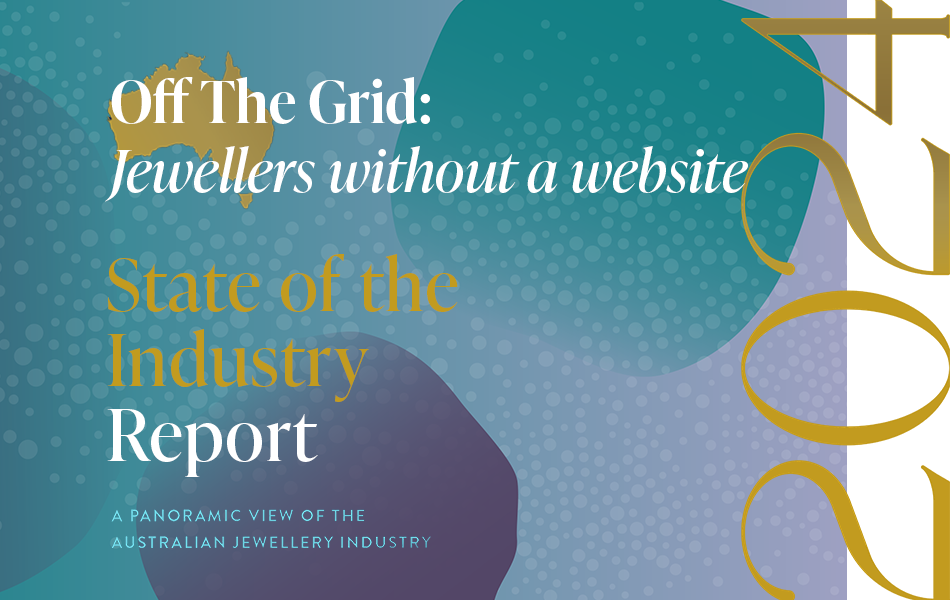 | |
| | WHAT! You are telling me that your business doesn't have a website?| If you had to guess, how many of Australia's independent jewellery retailers don't have a website? Would you say 100, 200, or even 300? How about 400, 500, or 600? |
| |
Hover over eMag and click cloud to download eMag PDF
PREVIOUS ISSUES